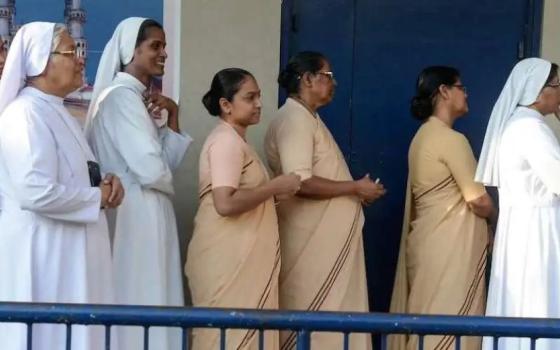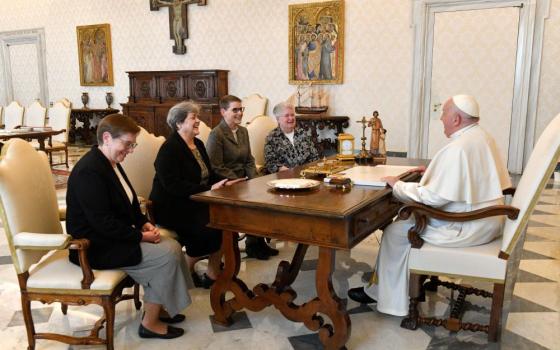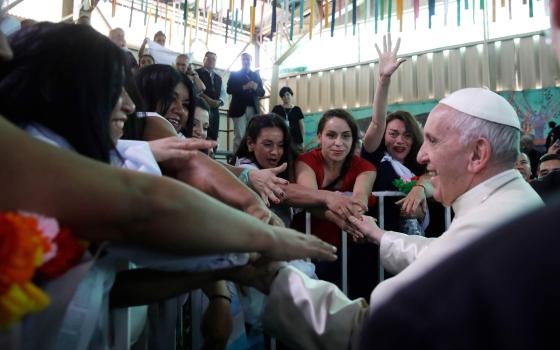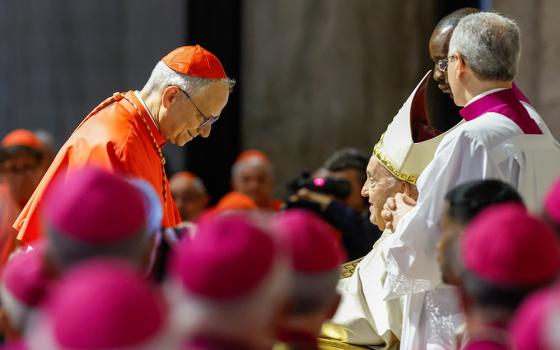
(Pixabay/Neo Tam)
The way some people can plan their day from the moment they awaken to the second they shut their eyes to sleep has always confounded me.
Maybe it's because my life has never run that smoothly.
Having children — especially like my four sons — precludes setting plans in stone on any given day. Something always would happen, and I learned decades ago to be flexible in adjusting what needed to be done.
In recent years, I've discovered that many Benedictine Sisters have acquired that virtue of flexibility — because it is, definitely, a virtue.
Even before COVID19 forced Benedictine retreat centers to close with little more than a moment's notice, I watched the sisters shift gears, like a well-lubricated transmission, from in-person to Zoom programs. I witnessed many instances of such flexibility.
Part of it has to do with prayer, I think. Each monastery has its own unique version of the Liturgy of the Hours, translated from original scriptural texts into inclusive language, for the most part. While the basic structure remains the same — a certain number of psalms and canticles at a given hour of the day, a reading and so forth — the variety infused within that structure keeps the cycle of prayer alive and vibrant throughout the years.
(It helps to have a creative liturgist, as well!)
The flexibility inherent in the Rule of St. Benedict becomes real when the sisters face events beyond the daily horarium, or schedule. The abrupt discovery that someone tested positive for COVID on the morning of a special celebration has — more than once — required that we cancel events or make an instant switch from welcoming guests to livestreaming the liturgy.
Musicians have had to step in to cover for a sister who caught a cold with laryngitis, or when an organ malfunctioned or a piano went out of tune. Cooks have revised a menu at the last minute to cover for someone whose flight was delayed by weather.
The list of examples could go on.
To what can this Benedictine adaptability be attributed?
Perhaps it is a centuries old situation, dating from when Sr. Benedicta Riepp arrived in America from Germany. She settled — oh, so briefly — in Pennsylvania, before moving on to create foundations in Minnesota; then other sisters continued on to Kansas and points west.
Even then, the sisters who created those foundations usually started in temporary housing, devising living quarters, a chapel and schools on the fly.
As their respective communities grew, they moved to larger structures, or organized the building of more traditional monastic enclaves.
Not only were these women detached from any traditional sense of "home," they learned to make do with what was available and create opportunities for ministry to those closest at hand: children, the poor, the excluded.
During the winter months, I have seen sisters awake in the wee hours to shovel snow so the community members and staff will be safe navigating the sidewalks, driveways and parking lots. When a tornado warning siren sounded after everyone was already in bed for the night, the entire community lent their efforts to ensure that safety protocols were observed.
As the size and dynamics of Benedictine communities changes, being flexible enough to let go of buildings or ministries is an undeniable form of wisdom. Assessing the strengths of what remains, the sisters are able to shift their energies into new ways of welcoming all as Christ.
Perhaps the best example of Benedictine flexibility occurred on what has become known as "The Christmas to Remember." During the morning Mass, an alarm sounded through the building. Feet scrambled along the corridor toward the kitchen to find a fountain of water cascading from the ceiling, spreading rapidly after a sprinkler line burst.
Advertisement
Within minutes, sisters, employees, the local fire department, police, paramedics and others converged on the disaster, using brooms and squeegees to direct the water, flecked with chunks of ceiling tile and plaster, out the doors.
Those open doors chilled fingers on one of the coldest days of the year, while shoes were soaked through. No one stopped, though, until the kitchen and office floors, the carpet in the corridor and dining room on the main floor, and the storerooms on the lower level, were drained of all puddles.
Oddly, the festive decorations and place settings on the dining room tables were not damaged, nor was the Christmas feast ruined. The dietary staff, taking the example of flexibility from the sisters for whom they work, transported the food to another area of the monastery, so the community could still enjoy the ham, sweet potatoes and other delicacies — if only on paper plates with plastic cutlery.
Friends and family contributed industrial-size fans to dry the remaining moisture and, within 48 hours, activities in the monastery were pretty much back to normal.
The flexibility continued, nonetheless: Notices posted on a bulletin board near the site of the pipe break transformed into pulp, so new copies were tacked on the wall in another location, to keep the sisters informed of upcoming events.
Another aspect of that flexibility could be found in the sense of humor the sisters maintained during the entire ordeal. The deep-seated knowledge that God indeed works in mysterious ways, and the faith to "go with the flow" of God's grace, made it possible for those eagerly preventing waves of water from spreading further than they did, to crack jokes while coordinating their movements so as not to step on each other or douse each other's clothes with stray droplets.
For Benedictines, flexibility is a blessing, a way to see the unexpected – even the disastrous – as a blessing, and to perpetuate those blessings in a positive way, even when the reason behind what happened is unfathomable.
The flexibility I have seen over the course of visiting many Benedictine monasteries can serve as a profound inspiration to those who may be too set in their ways, missing the countless opportunities to recognize and adapt to situations, encounters with others and life in general.
It may look like a messy approach, but it's actually far healthier than trying to push forward on a predetermined route. Nurturing flexibility is a sign of an open heart and open mind — open to unending possibilities!








